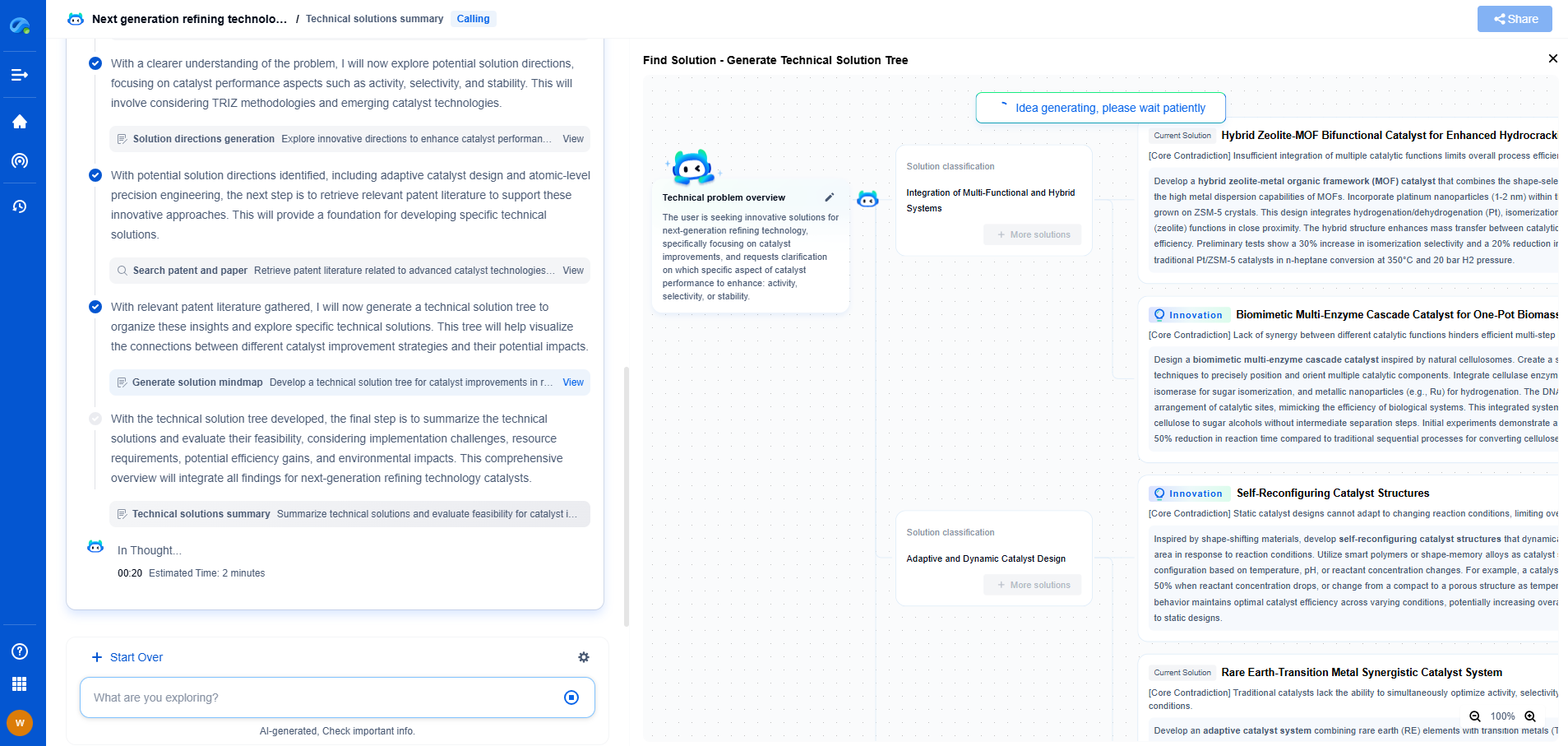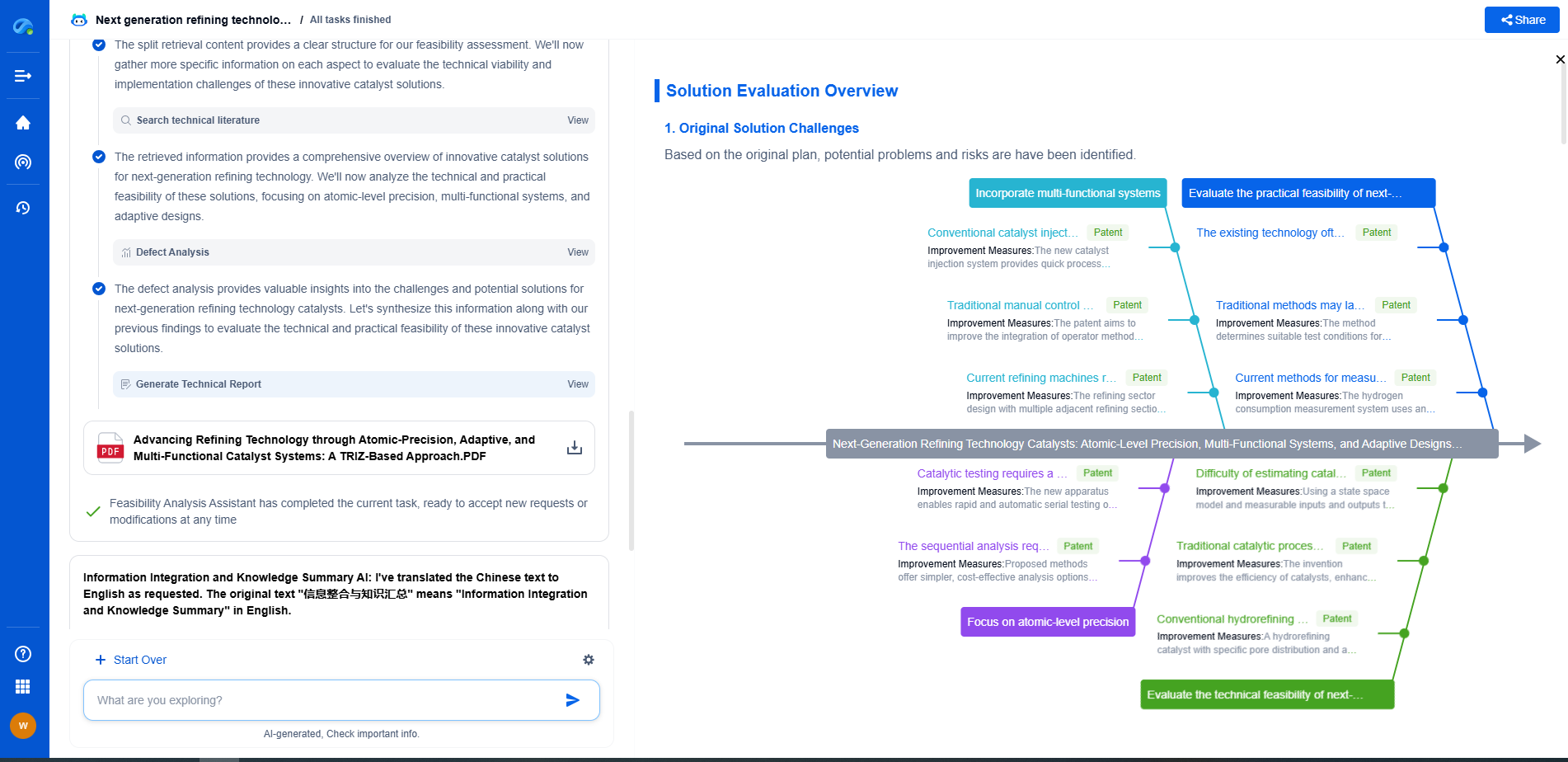How Verizon Transitioned from NSA to SA 5G
JUL 7, 2025 |
In the fast-paced world of telecommunications, Verizon has consistently positioned itself as a leader in innovation and technology adoption. One of the significant transitions in recent years has been its shift from Non-Standalone (NSA) 5G to Standalone (SA) 5G architecture. This evolution marks a pivotal moment in the carrier's 5G journey, promising to unlock new capabilities and improve user experiences. In this blog, we delve into the reasons behind this transition, the challenges encountered, and the potential benefits for consumers and industries alike.
Understanding NSA vs. SA 5G
To appreciate the significance of Verizon's transition, it is crucial to understand the difference between NSA and SA 5G architectures. NSA 5G networks rely on existing 4G LTE infrastructure, using it as an anchor, with 5G providing an added layer of connectivity. This architecture allowed for a quicker deployment of 5G services but came with limitations in terms of performance and network capabilities.
On the other hand, SA 5G operates independently of 4G infrastructure, utilizing a 5G core network. This allows for enhanced features such as ultra-low latency, improved network slicing, and greater support for Internet of Things (IoT) applications. Verizon's shift to SA 5G signifies a move towards realizing the full potential of 5G technology.
Motivations Behind the Transition
Verizon's decision to transition from NSA to SA 5G is driven by several factors. Primarily, SA 5G offers superior network performance and reliability, which is essential for supporting advanced applications such as autonomous vehicles, smart cities, and virtual reality experiences. By adopting SA architecture, Verizon can provide faster download and upload speeds, more stable connections, and enhanced user experiences.
Moreover, SA 5G enables network slicing, a feature that allows operators to create customized network segments, each tailored to specific applications or customer needs. This capability is particularly advantageous for enterprise clients seeking dedicated and reliable network resources.
Navigating the Transition Challenges
Transitioning to SA 5G is not without its challenges. Technical hurdles include upgrading existing infrastructure, ensuring compatibility with a wide range of devices, and deploying a new 5G core network. Verizon has invested heavily in its network infrastructure, collaborating with technology partners to overcome these obstacles and ensure a seamless transition.
Additionally, the shift to SA 5G requires regulatory compliance and alignment with industry standards. Verizon has worked closely with regulatory bodies to ensure that the rollout complies with legal requirements and industry best practices.
The Impact on Consumers and Industries
For consumers, Verizon's transition to SA 5G means improved network performance, with faster speeds and lower latency. This translates to smoother streaming, quicker downloads, and a more responsive internet experience. For gamers and tech enthusiasts, the benefits are even more pronounced, with real-time gaming and rich virtual reality applications becoming more accessible.
Industries, too, stand to gain significantly from SA 5G. The enhanced capabilities of SA networks support the burgeoning IoT ecosystem, enabling smarter manufacturing, logistics, and healthcare services. Businesses can leverage the improved connectivity to innovate and streamline operations, ultimately driving economic growth.
Conclusion: A Step Towards the Future
In conclusion, Verizon's shift from NSA to SA 5G represents a strategic move towards a more robust and capable network infrastructure. By embracing standalone 5G, Verizon is not only enhancing its service offerings but also paving the way for a future where connectivity underpins every facet of modern life. As this transition unfolds, consumers and industries alike can look forward to experiencing the unprecedented benefits of a fully realized 5G network.
Empower Your Wireless Innovation with Patsnap Eureka
From 5G NR slicing to AI-driven RRM, today’s wireless communication networks are defined by unprecedented complexity and innovation velocity. Whether you’re optimizing handover reliability in ultra-dense networks, exploring mmWave propagation challenges, or analyzing patents for O-RAN interfaces, speed and precision in your R&D and IP workflows are more critical than ever.
Patsnap Eureka, our intelligent AI assistant built for R&D professionals in high-tech sectors, empowers you with real-time expert-level analysis, technology roadmap exploration, and strategic mapping of core patents—all within a seamless, user-friendly interface.
Whether you work in network architecture, protocol design, antenna systems, or spectrum engineering, Patsnap Eureka brings you the intelligence to make faster decisions, uncover novel ideas, and protect what’s next.
🚀 Try Patsnap Eureka today and see how it accelerates wireless communication R&D—one intelligent insight at a time.
- R&D
- Intellectual Property
- Life Sciences
- Materials
- Tech Scout
- Unparalleled Data Quality
- Higher Quality Content
- 60% Fewer Hallucinations
Browse by: Latest US Patents, China's latest patents, Technical Efficacy Thesaurus, Application Domain, Technology Topic, Popular Technical Reports.
© 2025 PatSnap. All rights reserved.Legal|Privacy policy|Modern Slavery Act Transparency Statement|Sitemap|About US| Contact US: help@patsnap.com

